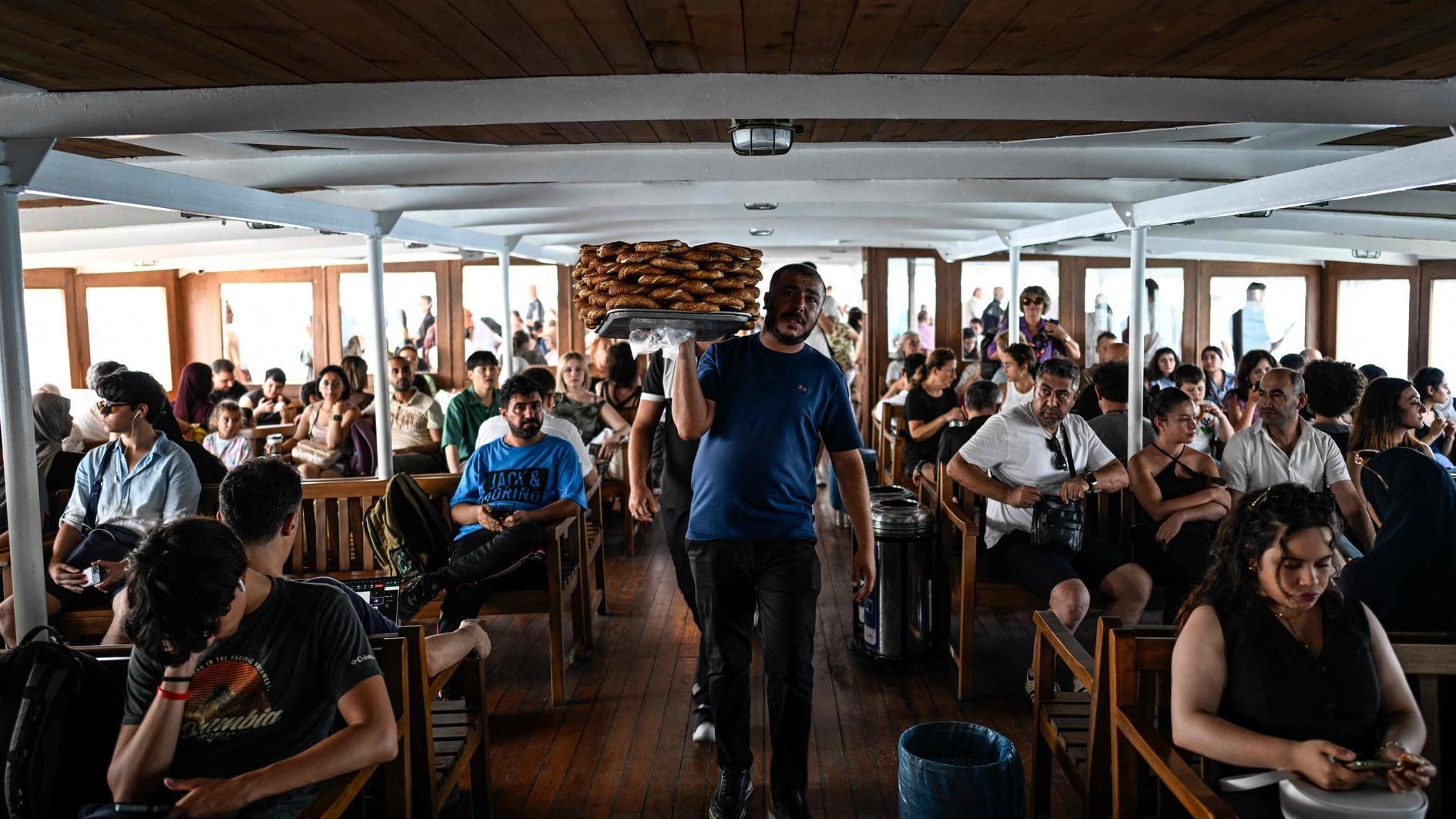
For nearly two centuries, the white ferries gliding over the Bosphorus Strait have provided an iconic link for countless passengers travelling between Istanbul's European and Asian shores.
Despite the increasingly congested waters and competition from the Turkish megacity's bridges and undersea metro line, the ferries remain very popular.
The main operator, Şehir Hatları, carries at least 40 million passengers a year.
"Any view of Istanbul must include Maiden's Tower, a ferry and a seagull," smiled Adil Bali, a specialist on the history of Istanbul's ferries, referring to a tiny rocky outcrop at the southern entrance to the Bosphorus.
"It is one of the few cities in the world that can be crossed by sea, so the ferries are indispensable here."
Their arrival in 1843 transformed the simple fishing villages lining the shores of the Bosphorus into popular holiday destinations where wooden palaces were later built overlooking the water, boosting trade.
Until the first Bosphorus bridge was opened in 1973, the only way to cross between Istanbul's Asian and European sides was by boat, and today, the experience remains an essential part of the city's charm.
At the helm of the Paşabahçe, the flagship of Şehir Hatları's 30 vessels, Captain Ekrem Özçelik said the waters had become increasingly crowded.
"There's a lot more traffic on the water," he said of the tankers, containers and cargo ships that pass through the strait linking the Black Sea to the Aegean via the Sea of Marmara and the Dardanelles.
There are also cruise ships and private yachts navigating what is one of the world's busiest waterways, where 41,300 vessels passed in 2024, official figures show, an average of 113 per day.
"Navigating the waters of Istanbul requires a certain amount of experience," Özçelik said of the strait's powerful currents, whose waters can get particularly tricky when strong southwesterly winds can whip up three-meter (10-foot) high waves.
Born into a family of sailors and fishermen, Özçelik said his boyhood dream was to one day don the white cap and uniform of a captain.
Now 52, he enjoys the freedom of sailing and the kudos of his profession.
And even more so on the Paşabahçe, which recently escaped being decommissioned and instead underwent a two-year restoration, returning to the Bosphorus in 2022 on its 70th birthday.
İbrahim Bayus, a 62-year-old engineer born on Büyükada, the largest of the nearby Princes' Islands in the Marmara Sea, recalls the familiarity of the ferries.
"As a boy, I often forgot to bring money, but the captain knew me," he smiled.